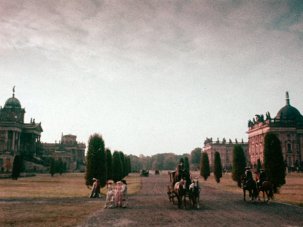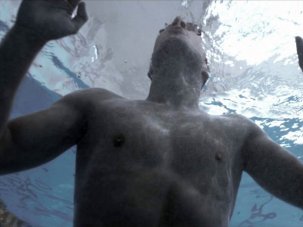Spoiler alert for a quarter-century-old film: at the end of Red, the concluding part of Krzysztof Kieślowski’s Three Colours trilogy, six major characters from the three films – this one, Blue and White – are the almost-sole survivors of a ferry disaster that claims the lives of over 1,400 people. (Apparently a British bartender also escapes.) It’s the ultimate act of a director-deity’s deus ex machina – looking down from on high, choosing who will and won’t die; and, in this case, allowing his chosen few to live.
The Three Colours Trilogy is available on Blu-ray from Curzon Artificial Eye in the UK, Criterion in the US, etc.
It’s perhaps easy to criticise that this blithe erasure of hundreds of ‘people’ (though we scarcely see any corpses in Red’s news footage of the incident) is precisely the problem with Kieslowski’s ‘determinedly apolitical’ stance in his later films, including these three. And such admonitions have been made. The faceless masses as mere statistics, while our favoured characters as the only ones who count. It’s the solipsism of Juliette Binoche’s grieving Julie in Blue, applied across the board: “I’m alright, Jacques…”
Such disapproving political analysis is probably exacerbated by Three Colours’ sheer beauty. From marketing centred on three glamorous young actresses to, most overtly, the colour-coded palettes of each film, these are self-consciously ‘art films’ (the grittier White admittedly less so than its two siblings). They recall François Truffaut’s brilliant observation in Les Films de Ma Vie – contrasting the raves given to Ingmar Bergman’s ostentatiously red-infused Cries and Whispers with the more muted reception to previous Bergman films – that “maybe all they lacked was red walls.”
Yet amid this universe of high stylisation, metaphysical connection and blind chance, it’s still possible to discern, despite Kieślowski’s own protests, a more grounded socio-cultural sensibility. Kieślowski’s emphasis on characters’ interior worlds – which stems from his very first short, 1966’s The Tram (Tramwaj) – and on the fluidity and interconnectedness of reality surely speaks, now more clearly than ever, to modern, often liminal existence within the global village. A space where we’re asked to imagine freedom, equality and fraternity across borders, and envisage a mutual responsibility to those we might only tangentially, or perhaps never actually, encounter.
Whether we can rise to this challenge, or instead determine to put up physical or virtual barriers and walls is, of course, another matter entirely. But this video essay looks to locate the ongoing relevance of Kieślowski’s final films, and their visualisation of the political through the personal.
-
The Digital Edition and Archive quick link
Log in here to your digital edition and archive subscription, take a look at the packages on offer and buy a subscription.








